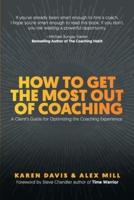Publisher's Synopsis
There are a range of views of the strategic development process within organisations. Some see the process as being purely creative, with little or no scope for analysis at any stage (hunch-and-hope). Others see it as being over-formalised, static and focusing on producing a strategic plan rather than on actions. The approach adopted in this book argues that for effective strategic decision making, creativity needs to be supported by structured methods. The strategic development process consists of a series of elements which need to be working effectively for the process to ensure the successful development of the organisation. These elements include objective setting and performance measurement, strategic initiative formulation, strategic evaluation and a process for modelling uncertain/uncontrollable factors. The book then presents a range of hard and soft methods and models capable of supporting them. These include the balanced scorecard, visioning, the TOWS matrix, cognitive mapping, scenario development, systems dynamics modelling, transformation methods such as reengineering, strategic investment appraisal and real option theory. The book should be of interest to both academics and practitioners concerned with strategic development and those teaching and researching in the fields of strategic management, management science and operational research. The book is developed from a previous text Strategic Planning: Models and Analytical Techniques, (Wiley, 1992) following a similar approach and including some of the same methods and models but incorporating an entirely new set of articles including contemporary classics by Eden, Kaplan, Keeney, Porter, Schoemaker and others.








